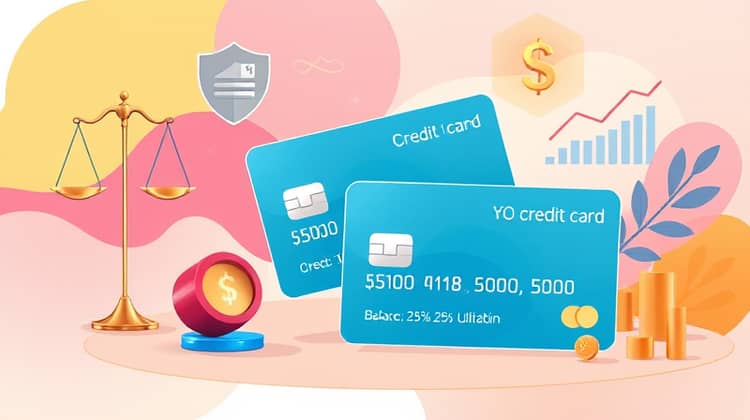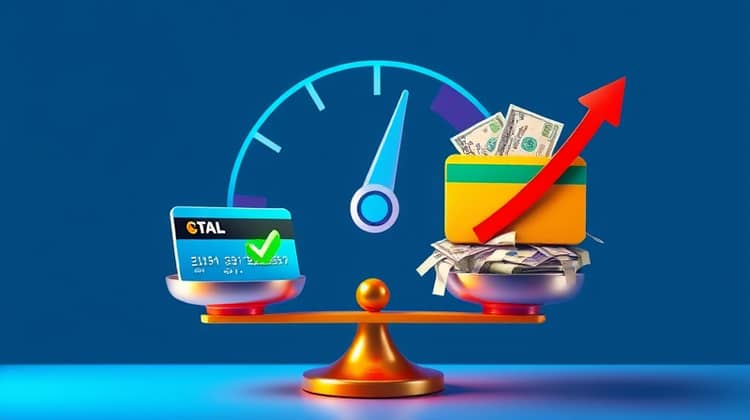In the world of personal finance, the terms and metrics used can often be confusing. One critical term that has significant implications for consumers is the credit card utilization ratio. This ratio measures how much of your available credit you are currently using, and understanding it can be essential not only for maintaining a healthy credit score but also for managing your overall financial health. Within this article, we will explore the complexities of credit card utilization, its effects on your credit score, lender perspectives, and how to improve your financial habits concerning credit usage.
With credit cards being a primary tool for many people to make purchases, the importance of keeping your utilization ratio low cannot be overstated. This article will break down the different aspects of credit card utilization, including how to calculate it, why it matters, and the common myths surrounding it. By the end of this article, readers should have a clear comprehension of how their credit card behavior affects other areas of their financial life, and how to correct course if necessary.
Understanding your credit card utilization ratio and implementing changes can pave the way for better credit scores and more favorable borrowing terms in the future. Whether you're a seasoned credit card user or just starting your financial journey, this information will be invaluable in navigating the landscape of credit responsibly.
Understanding Credit Card Utilization

Credit card utilization, often measured as a percentage, reflects how much of your total available credit limit you are using at any point in time. For instance, if you have two credit cards with a total credit limit of $10,000 and you are carrying a balance of $2,500, your credit utilization ratio would be 25%. This metric is a significant component of your credit report and credit score calculations and represents your creditworthiness to potential lenders.
The concept of utilization ratio is more than just a numerical figure; it reflects your overall responsible use of credit. A lower ratio generally conveys a sense of fiscal responsibility, whereas a high ratio may indicate to lenders an increased risk of default. This is because borrowers who max out their credit limits are seen as being in financial distress and are more likely to have trouble making payments.
Understanding how credit card utilization works is essential for anyone looking to maintain or improve their credit score. Monitoring your utilization can help you avoid falling into the trap of high balances, which can lead to unfavorable perceptions from lenders and potential financial strain.
How Credit Card Utilization Affects Your Credit Score

Credit scoring models, like FICO and VantageScore, place significant weight on credit utilization as a pillar of whether borrowers are likely to repay their debts. Typically, a utilization ratio under 30% is considered favorable, while anything higher can negatively impact your score. This is crucial, as a lower credit score can hinder your ability to qualify for loans and secure favorable interest rates.
Since credit utilization accounts for about 30% of your overall credit score, it's clear that managing this ratio should be a priority. High utilization may not only lead to a lower credit score but can also result in higher interest rates when you do qualify for credit. Understanding the cyclical nature of credit scores and utilization gives consumers the tools to navigate their credit behavior more effectively.
Additionally, credit scoring agencies periodically update their models, which may place different emphasis on utilization ratios as a consumer's credit history progresses. This means being aware of your utilization can lead to more informed financial decisions, especially if you aim to make large purchases or apply for loans in the near future.
Why Does Credit Card Utilization Ratio Matter?

The credit card utilization ratio matters because it serves as a direct indicator of how responsibly you manage borrowed money. It highlights the extent to which you rely on credit, which is a significant consideration for lenders assessing your loan applications. A high utilization ratio can signal to lenders that you may already be over-reliant on credit, presenting a potential risk if you seek additional borrowing.
Moreover, maintaining a low credit utilization ratio can enhance your attractiveness to potential lenders, enabling you to secure higher credit limits, lower interest rates, and contribute positively to your overall credit profile. This can be particularly beneficial as you navigate major life events requiring financing, such as purchasing a home or starting a business.
Finally, understanding how your utilization works allows you to leverage it strategically. For instance, if you know your ratio is approaching a higher risk threshold, you can take proactive steps to reduce your balances or refrain from making additional charges until you adjust your utilization ratio downward.
Lenders’ Perspective

From a lender's perspective, analyzing a borrower's credit utilization ratio is one of the first steps in assessing credit risk. Loans and credit cards are tools that allow consumers to manage their financial needs, but if a person is utilizing a significant portion of their available credit, it could suggest they are living beyond their means. This can make lenders hesitate before granting additional credit or loans to that individual.
Lenders view a lower credit utilization ratio as a sign of better financial management. They consider consumers with lower ratios as less likely to default due to the fact that they are effectively managing their credit limits. This perspective is vital because lending decisions are not solely based on credit scores; patterns of credit use form part of a broader financial picture during evaluations.
Understanding lenders' perspectives regarding utilization can empower consumers to manage their credit responsibly. This includes timing their credit card usage and repayments to display a more favorable utilization ratio consistently, improving their attractiveness to lenders during future credit applications.
Future Borrowings

Your credit card utilization ratio can significantly impact your options for future borrowing. When lenders assess your creditworthiness for a loan—such as a mortgage, auto loan, or personal loan—they will look not only at your credit score but also at your utilization habits. High utilization can potentially limit the amount of credit you can access and result in higher interest rates for any loans you do qualify for.
Therefore, maintaining a healthy credit utilization ratio becomes crucial if you plan for future financial endeavors that may require larger sums of credit. Establishing a solid credit management routine around utilization can put you on a more favorable trajectory when seeking financing later on.
How to Calculate Your Credit Card Utilization Ratio

Calculating your credit card utilization ratio is a straightforward process that can be done in just a few steps. Firstly, gather information regarding your total available credit limits across all your credit cards. Then, find out the total balance you carry on these cards. With these two figures, you can easily compute your ratio using the formula: Total Credit Card Balances ÷ Total Credit Limit x 100 = Credit Utilization Ratio.
For instance, if you have three credit cards with limits of $5,000, $7,000, and $8,000, the total credit limit is $20,000. If your total balances on these cards are $3,500, your utilization ratio would be 17.5% ($3,500 ÷ $20,000 x 100). Regularly monitoring this metric will help you stay aware of your credit usage.
Keeping your credit utilization ratio low generally means you're utilizing a smaller fraction of your overall credit, which can positively influence your credit score. Aim for a utilization ratio of 30% or lower to maintain a strong credit profile.
- Calculate your total available credit limits from all your cards.
- Calculate your total outstanding balances on your credit cards.
- Use the formula: Total Credit Card Balances ÷ Total Credit Limit x 100.
By following these steps, you will have a clear picture of your credit utilization and what adjustments you may need to make to improve your financial standing.
How to Improve Your Credit Utilization Ratio

Improving your credit utilization ratio is a vital step in maintaining or enhancing your credit score. Simple strategies include paying off existing credit card balances more frequently or ensuring you don't max out your cards on purchases. Another effective method could be to request a credit limit increase from your card issuer, as this will raise your total credit limit and subsequently reduce your utilization ratio, assuming your balances remain the same.
Additionally, spreading out expenses across multiple credit cards instead of consistently using one can help keep the utilization ratio lower on each card. This can be particularly beneficial as it may improve your credit utilization overall, leading to better scores and lending opportunities.
- Pay down existing credit card balances
- Request an increase in your credit limit
- Spread out your expenses across multiple cards.
Implementing these strategies can not only lead to an improved credit utilization ratio but can also contribute positively to your overall credit health.
Credit Card Utilization Ratio Myths and Misconceptions

There are many myths surrounding credit card utilization ratios that can confuse consumers. One common misconception is that closing a credit card account will improve your utilization ratio. However, closing a card can actually reduce your total available credit, potentially increasing your ratio, leading to a negative impact on your credit score.
Another myth is the belief that you should carry a balance on your credit cards to build credit. This is not true. Maintaining a low or zero balance while regularly using your card responsibly can be sufficient to establish a positive credit history without incurring interest charges.
- Closing a credit card account can improve your utilization ratio.
- Carrying a balance is necessary to build credit.
Understanding these myths is essential for consumers to navigate their credit effectively and to avoid making decisions that could damage their score inadvertently.
Conclusion

In conclusion, understanding and managing your credit card utilization ratio is fundamental to achieving financial health and fostering a good credit score. With its impact resonating through all aspects of personal finance—from obtaining loans to securing favorable interest rates—being informed about utilization can empower consumers to establish better financial habits and practices.














